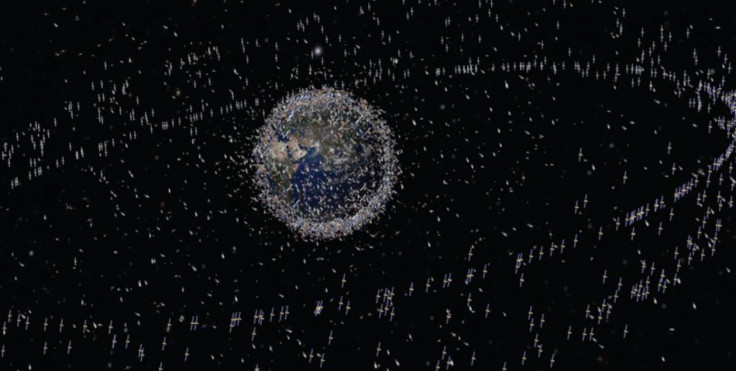Space Junk Reaching 'Tipping Point' Threatens Space Missions

Space junk scattered in Earth's orbit is at critical level, and coupled with NASA's dwindling budget, threatens spacecraft and satellites in orbit, according to a report recently released by the National Research Council.
Space junk, also known as orbital or space debris, is non-functional man-made objects like spent rocket bodies, defunct satellites and erosion, explosion and collision fragments.
According to the report, potential problems caused by space junk traveling at over 17,500mph include disruptions of financial transactions, air traffic control and even weather reports.
One of the most pressing issues right now is the result of collisions that we have observed in orbit and the fact that those collisions could be the beginning of a much greater problem that could lead to the need to recover debris from orbit to bring back to Earth, said Donald Kessler.
Kessler, an ex-NASA researcher, developed this syndrome while working in NASA's Environmental Effects Project Office at Johnson Space Center in Houston, Texas.
Currently, traceable objects mount to 22,000, and the amount of debris is increasing with time, Kessler said. At least 500,000 smaller particles exist, holding potential damage as it emits a considerable amount energy when traveling in high speeds.
They also state that some scenarios indicate a tipping point on the low-Earth orbit, wherein all disposed space junk will collide with each other causing a cascade effect - which is known as the Kessler's Syndrome.
There is the fear if we don't place anything in orbit, we will have this cascade phenomenon creating more debris.
The situation was exacerbated because of two recent events that includes a Chinese weapon test in 2007 in which a weather satellite was blown to pieces. In 2009, two satellites accidentally collided.
Space tethers, or long and strong cables that use the Earth's magnetic field to move in space, could be one way to remove the space junk.
A developing idea to clear out the debries and secure future flights comes from Star Research and Technology Inc., which plans to launc several spacecraft to launch nets into space, capturing the space junk and dragging them out of the flight paths of spaceships, while the exact destination of debris remains unclear.
The National Research Council has suggested that NASA should consider different work techniques like a new effort to record, analyze, report and share data on spacecraft anomalies. This might provide new details about the risk from debris particulates too small to be catalogued under the current system yet large enough to potentially cause damage.
Apart from this, the council has also suggested the setting of a public discussion forum by NASA to emphasize the long-term effects and risks of space debris on human civilizations.
The current space environment is growing increasingly hazardous to spacecraft and astronauts, stated Kessler. NASA needs to determine the best path forward for tackling the multifaceted problems caused by meteoroids and orbital debris that put human and robotic space operations at risk.
© Copyright IBTimes 2025. All rights reserved.





















